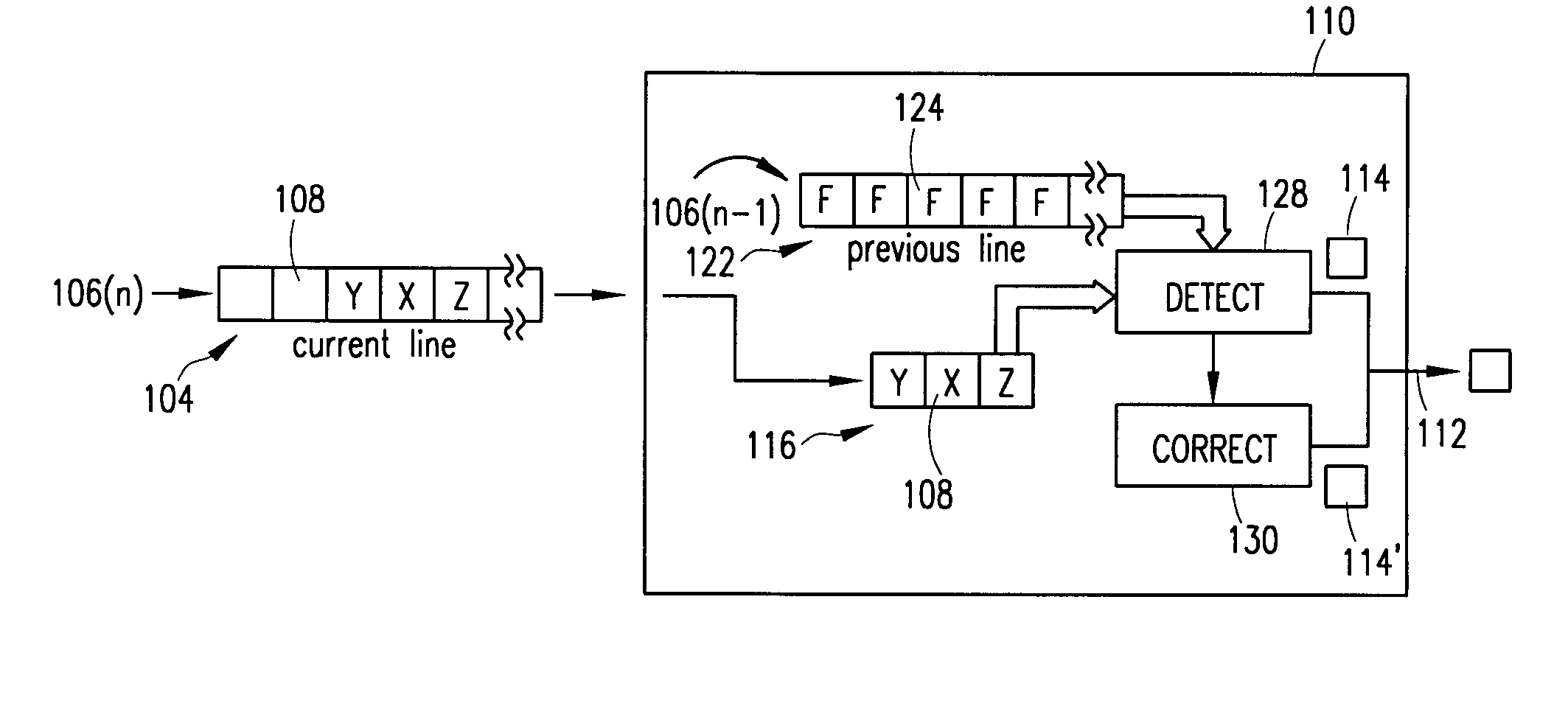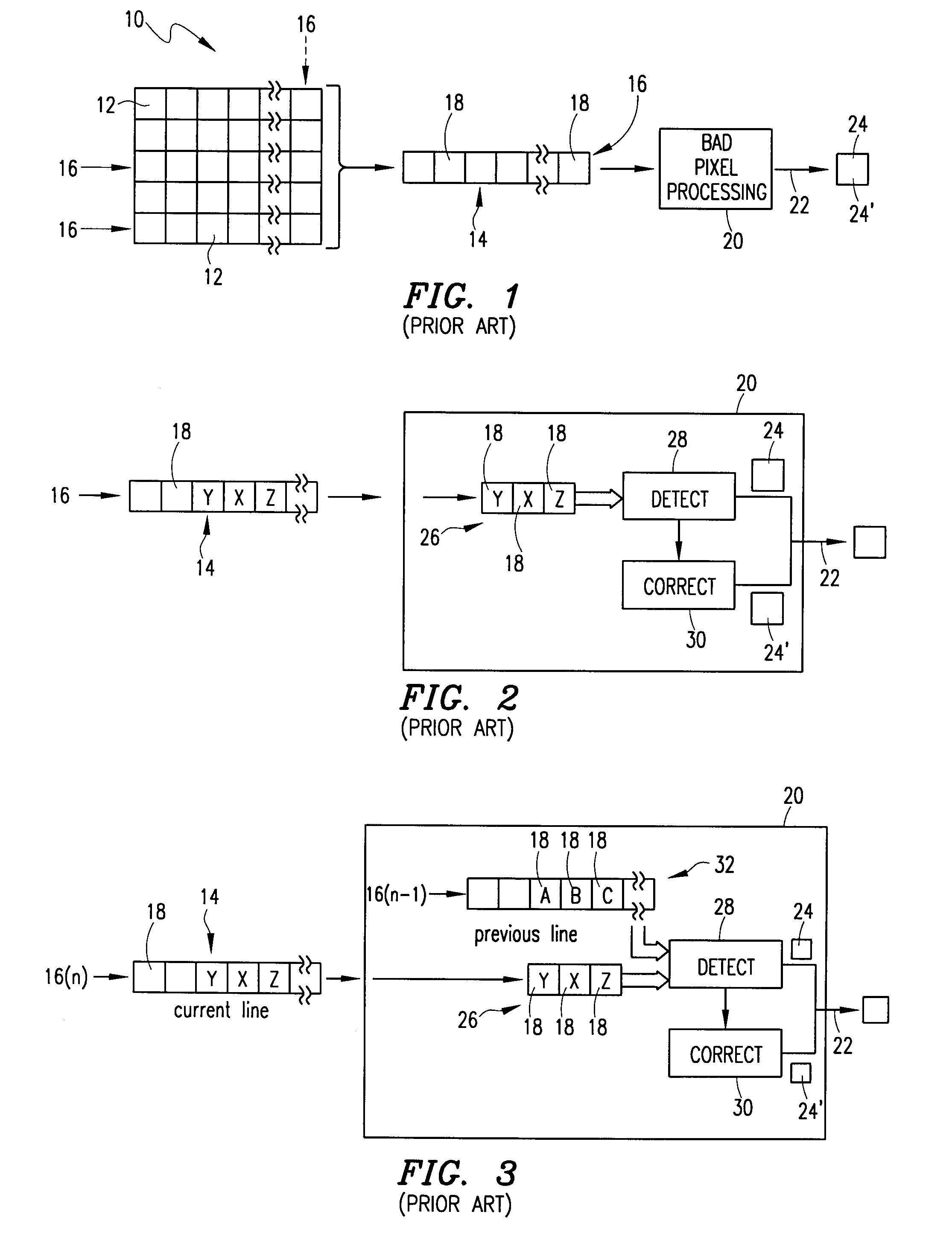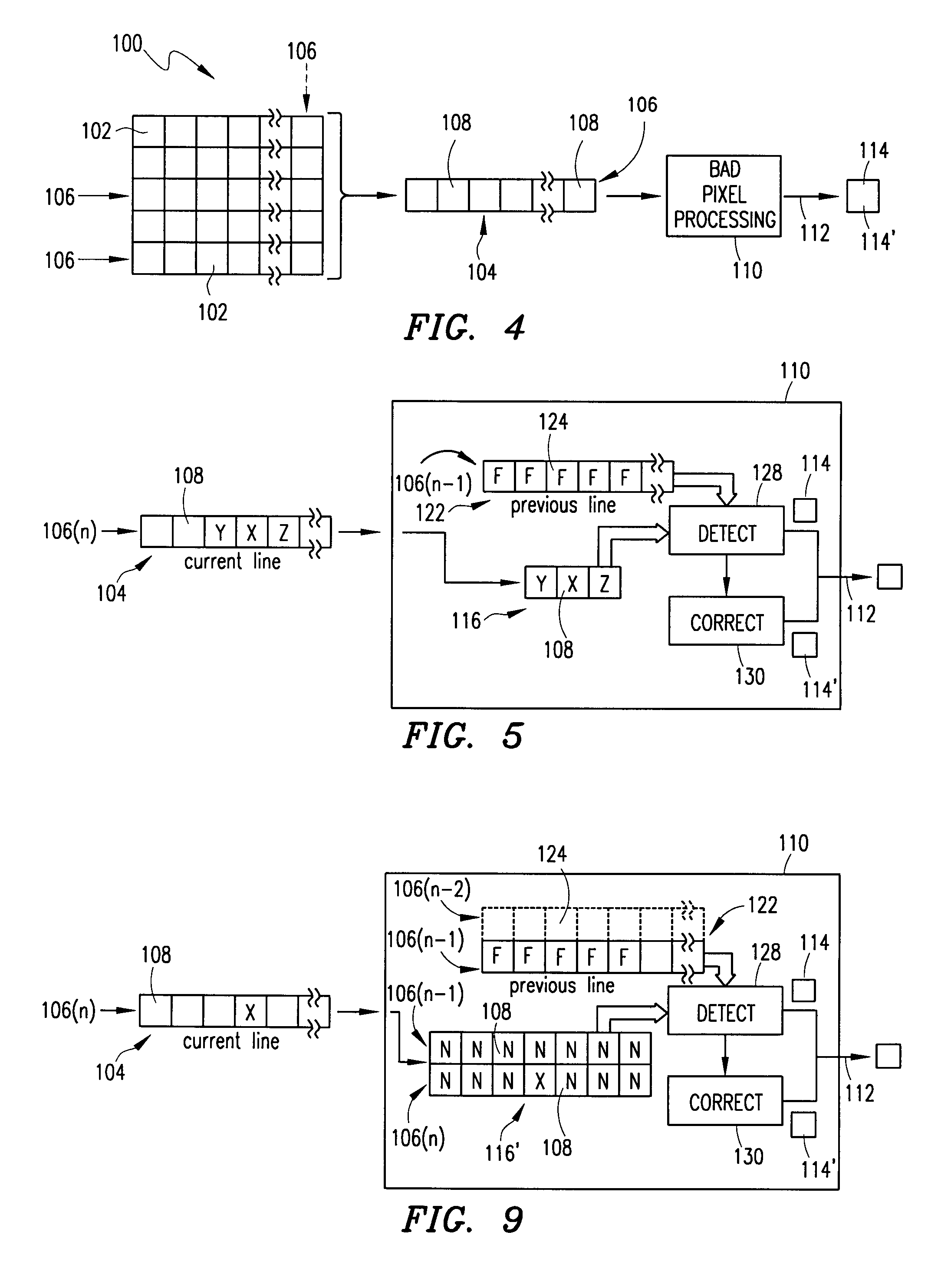Bad pixel detection and correction in an image sensing device
a technology of image sensing and bad pixel, which is applied in the field of image sensing devices, can solve the problems of unfavorable image generation, unfavorable image generation, and possible economic unfeasibility and unrealizability, and achieve the effects of brighter than expected spots in the generated image, stringent and perhaps economic unfeasibility, and unrealizability
- Summary
- Abstract
- Description
- Claims
- Application Information
AI Technical Summary
Benefits of technology
Problems solved by technology
Method used
Image
Examples
Embodiment Construction
FIG. 4 shows a simplified schematic diagram of a sensor read-out operation in accordance with an embodiment of the present invention. A sensor array 100 includes a plurality of photodetectors 102. Each photodetector 102 outputs a signal (referred to herein as "pixel data") whose magnitude ideally has a predetermined monotonic relationship to the intensity of light incident on the photodetector. Although not explicitly shown, the generated signal for each pixel has a digital format (obtained through appropriate analog-to-digital conversion) normally ten to twelve bits in size.
A read-out buffer 104 is used to read out and capture either a horizontal row or vertical column of individual pixel data that is generated from the photodetectors. In this context, a horizontal row or a vertical column is referred to as a "line" 106. Following capture of a line 106 of pixel data in the buffer 104, each individual piece of pixel data 108 is serially processed in a bad pixel processor 110. The pr...
PUM
 Login to View More
Login to View More Abstract
Description
Claims
Application Information
 Login to View More
Login to View More - R&D
- Intellectual Property
- Life Sciences
- Materials
- Tech Scout
- Unparalleled Data Quality
- Higher Quality Content
- 60% Fewer Hallucinations
Browse by: Latest US Patents, China's latest patents, Technical Efficacy Thesaurus, Application Domain, Technology Topic, Popular Technical Reports.
© 2025 PatSnap. All rights reserved.Legal|Privacy policy|Modern Slavery Act Transparency Statement|Sitemap|About US| Contact US: help@patsnap.com



